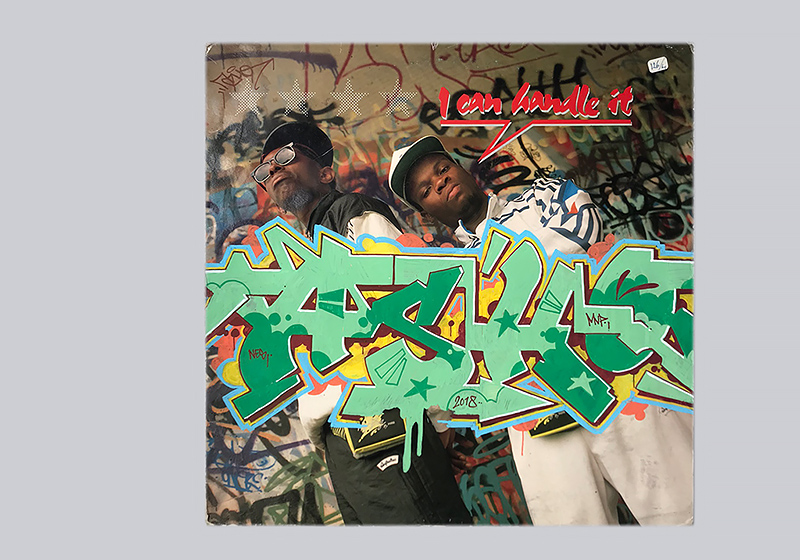Since music and graffiti have historically been parts of culture that have brought people together, it wasn’t long before a crossover occurred. Not only within the hip hop genre, but also within movements such as punk and jazz, several covers were created by graffiti writers in the late 1970s and 1980s. These are all iconic due to the fusion of different disciplines and the visual power of graffiti.
In addition, photographers are often inspired by the imagery and atmosphere that graffiti conveys. Rappers, breakdancers and DJs are portrayed against a backdrop of full walls or trains. An additional phenomenon is that kids in Europe get in touch with graffiti through these covers and start copying the letters and shapes. Listening to the beats and rhymes of the releases, the graffiti of the covers were copied on many street corner.

In the mid-1990s, a new movement emerges. Writers who are increasingly working their way up to established designers or artists are getting commissions from independent labels to design special productions. These crossovers become collector’s items and due to limited editions quickly find their way to auction houses or collectors.

The 12-inch surface is also a welcome canvas for giving a unique and individual face to graffiti culture. With tags, throw-ups or elaborate pieces, the covers get a second life and become a unique piece of heritage.

On display
Graffiti Culture & record sleeves
At our location we display various items from the collection. By highlighting a subject we give context to what graffiti heritage consists of. The exhibitions are small in scope, but large in impact. To be seen by appointment or at times when we are present.
Dutch Graffiti Library
Urban heritage
De Hallen Amsterdam
DENIM City
Hannie Dankbaarpassage 22
1053 RT Amsterdam
